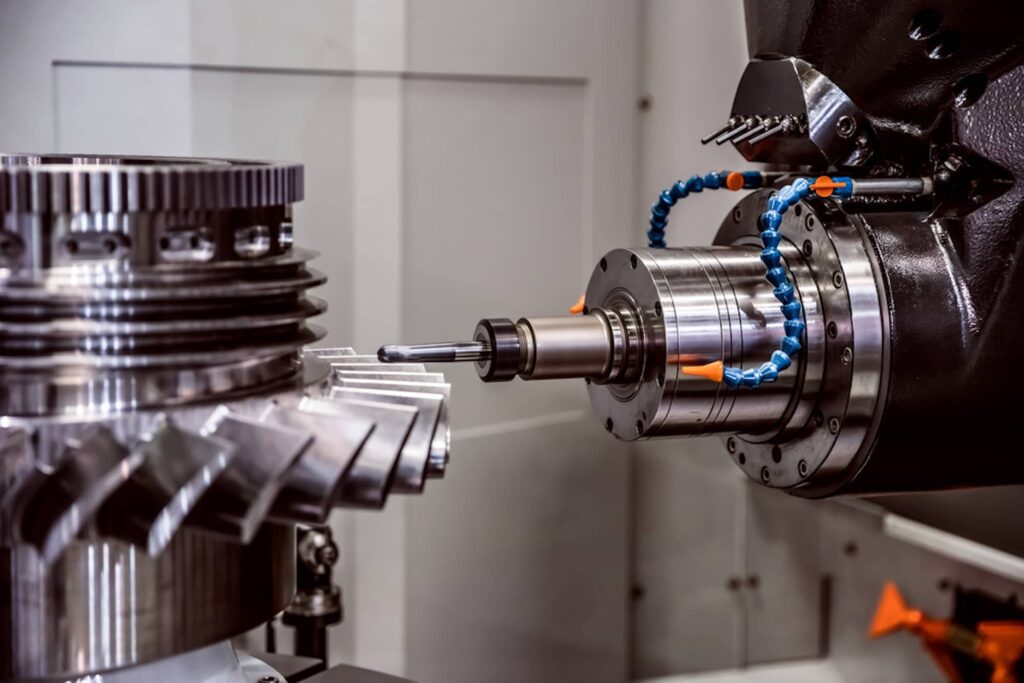In today’s fast-paced manufacturing world, efficiency, precision, and innovation aren’t just buzzwords—they’re the lifeblood of success. And nowhere is this truer than in the realm of CNC milling. If you’ve ever marveled at the perfect precision of modern parts or wondered how manufacturers turn raw metal into intricate components, you’ve likely encountered the transformative power of CNC milling.
Manufacturing used to be a game of trade-offs: speed vs. quality, complexity vs. cost. But with CNC milling, those compromises are becoming a thing of the past. In this article, I’m going to take you on a deep dive into how CNC milling has reshaped the manufacturing landscape, why it matters for businesses and consumers alike, and why it’s worth paying attention to—even if you don’t work in a factory.
Understanding CNC Milling: The Heart of Modern Manufacturing
Before we explore its impact, let’s clarify what CNC milling actually is. At its core, CNC milling is a computer-controlled process used to cut, shape, and drill materials like metal, plastic, and wood. Unlike traditional manual milling, CNC milling uses precise software commands to control the movement of cutting tools. This means what once took hours—or even days—can now be done in a fraction of the time, with minimal human intervention.
The Mechanics Behind CNC Milling
Imagine a skilled craftsman chiseling away at a block of metal, but instead of relying on hand movements, you’ve got a computer telling the tools exactly how to move. That’s essentially what happens in CNC milling. The machine operates along multiple axes—sometimes three, five, or even more—allowing it to produce highly intricate designs that would be nearly impossible to achieve by hand.
This precision doesn’t just look impressive; it directly impacts product quality. Parts come out consistent, with tighter tolerances, and far less room for human error. For businesses, this translates to reduced waste, lower costs, and happier clients.
CNC Milling vs. Traditional Milling
Traditional milling often required a combination of skilled labor and a lot of trial and error. Mistakes were costly, and every batch of components had to be closely inspected. CNC milling flips this on its head. By relying on computer programming rather than human dexterity alone, manufacturers can scale production while maintaining uniformity.
And let’s not forget speed: what used to take hours or days manually can now be done in minutes. This acceleration has profound implications for industries like aerospace, automotive, and even medical device manufacturing, where precision and time are both critical.
The Evolution of Manufacturing with CNC Milling
The story of CNC milling is also a story of manufacturing evolution. It didn’t happen overnight, but its adoption has been nothing short of revolutionary.
From Manual to Automated Precision
Back in the mid-20th century, milling was largely manual. Workers relied on lathes, drill presses, and milling machines, guided by blueprints and hands-on expertise. This era demanded intense skill and patience—but it also had limitations. Complex designs were slow, expensive, and prone to human error.
Fast forward to today, and CNC milling machines are rewriting the rulebook. Using computer-aided design (CAD) files, manufacturers can produce components that are not only more precise but also far more complex. Think of gears with tiny, intricate teeth or aerospace components that must withstand extreme forces—these are all made possible by CNC milling.
Case Study: Automotive Industry Transformation
Take the automotive industry, for example. Car engines, transmissions, and even interior components rely on precision parts. Before CNC milling, producing these components was labor-intensive and expensive. Today, CNC milling machines can churn out hundreds of identical components with unmatched accuracy.
I remember visiting a factory a few years back, and the operator casually said, “We can produce in a day what used to take a week.” That kind of efficiency doesn’t just save time; it saves money, reduces waste, and allows companies to innovate faster.
Accessibility and Customization
One of the most exciting aspects of CNC milling is its flexibility. Small businesses and hobbyists alike can use CNC milling to create custom products that were once impossible to manufacture without a large factory setup. Whether it’s a one-off prototype or a limited run of custom parts, CNC milling levels the playing field.
Advantages of CNC Milling in Modern Manufacturing
So, what makes CNC milling truly revolutionary? Let’s break down the key advantages that are driving its widespread adoption.
Precision and Consistency
CNC milling eliminates the variability inherent in manual production. Every cut, hole, and contour is programmed, so parts come out nearly identical. This consistency is invaluable in industries like aerospace and medical devices, where even the smallest deviation can have serious consequences.
Increased Efficiency and Speed
By automating what used to be manual tasks, CNC milling dramatically increases production speed. Machines can run 24/7 with minimal supervision, allowing companies to meet tight deadlines and large orders without sacrificing quality.
Cost Reduction
Although CNC milling machines require a significant upfront investment, the long-term cost savings are undeniable. Reduced material waste, fewer errors, and faster production cycles all contribute to a healthier bottom line.
Complex Designs Made Easy
CNC milling isn’t just about speed and efficiency; it’s also about creative freedom. Designers can create complex geometries, intricate engravings, and precise contours that were unimaginable with traditional methods. This capability has opened new doors in industries ranging from aerospace to jewelry-making.
Challenges and Considerations in CNC Milling
Of course, no technology is perfect. While CNC milling has numerous benefits, there are challenges that manufacturers must navigate.
Initial Investment and Maintenance
High-quality CNC milling machines are not cheap, and maintenance can be complex. Operators must be trained, and machines require regular servicing to maintain precision. However, many companies find that the long-term benefits far outweigh these initial costs.
Programming Expertise
CNC milling is only as good as its programming. Skilled operators who understand CAD and CAM software are essential. Without proper programming, machines can produce flawed components or even damage themselves.
Material Limitations
While CNC milling is versatile, certain materials pose challenges. Extremely hard or brittle materials require specialized tooling, and some designs may need hybrid approaches combining CNC milling with other manufacturing methods.
The Future of CNC Milling
If you think CNC milling has already transformed manufacturing, you haven’t seen the half of it. Emerging trends suggest even more exciting developments ahead.
Integration with AI and IoT
Although this article is focused on human-driven processes, CNC milling is increasingly integrated with AI and IoT systems to monitor performance, predict maintenance needs, and optimize production schedules. This doesn’t replace skilled operators; it enhances their capabilities.
Advanced Materials and 3D Printing Synergy
CNC milling is also evolving to work alongside 3D printing and advanced materials. Hybrid manufacturing techniques are allowing manufacturers to produce components with unmatched complexity, combining additive and subtractive processes for optimal results.
Sustainability in Manufacturing
Finally, CNC milling contributes to sustainability. Reduced material waste, more efficient production cycles, and the ability to repair rather than replace parts all align with environmentally conscious manufacturing practices.
Conclusion: CNC Milling as a Manufacturing Game-Changer
When you step back and look at the bigger picture, it’s clear that CNC milling has done more than just improve a few processes—it has redefined what’s possible in manufacturing. From precision and speed to creative freedom and cost-efficiency, CNC milling empowers businesses to innovate in ways that were unthinkable just decades ago.
If you’re involved in manufacturing, design, or engineering, embracing CNC milling isn’t just a smart move—it’s essential. Its impact is profound, practical, and enduring, proving that the marriage of human ingenuity and machine precision can indeed revolutionize the world.
So next time you see a perfectly machined component, a flawless car engine part, or an intricately designed prototype, remember this: behind it all is the transformative power of CNC milling, quietly shaping the future of manufacturing, one precise cut at a time.





























